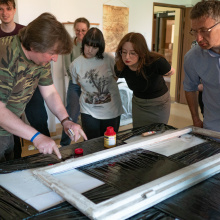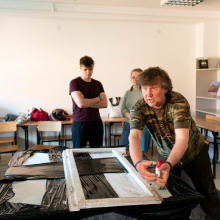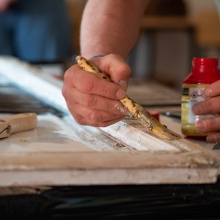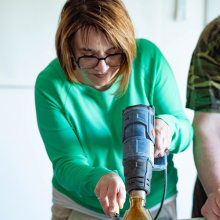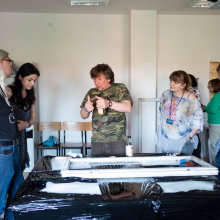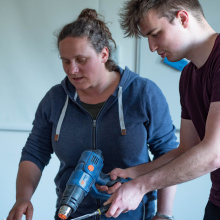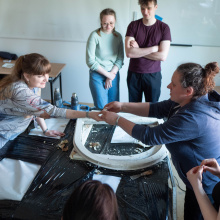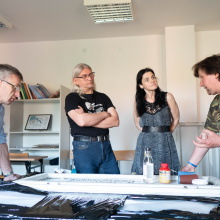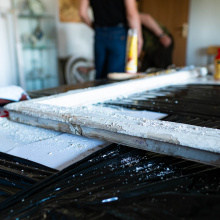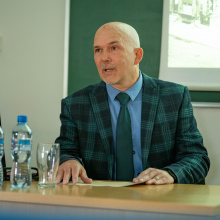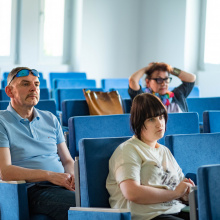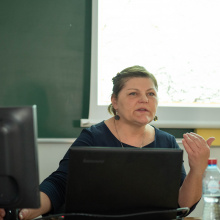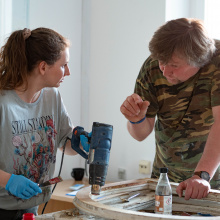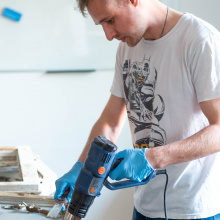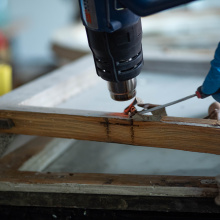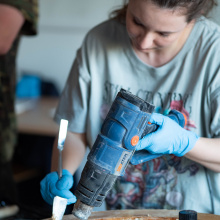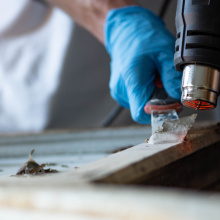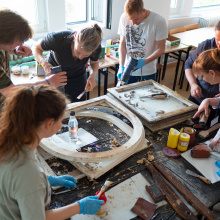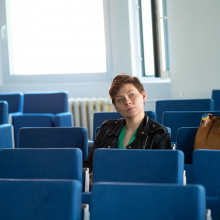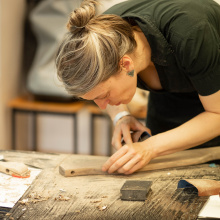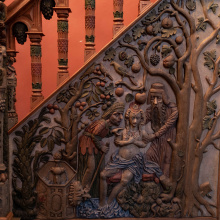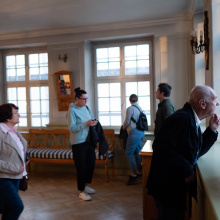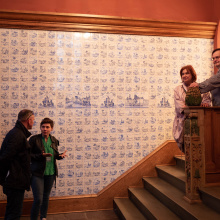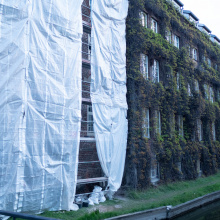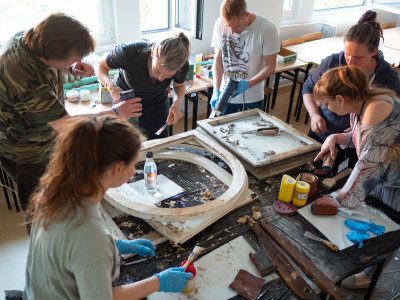
Is the conservation of monuments and antiques difficult? This is what the participants of an event organised by the University of Gdańsk Museum and the Polanki Foundation on the occasion of the completion of conservation work on the facade of the Pelplin Abbots' House found out on May 13. Those taking part in the Zabytek odNOWA meeting could try restoring damaged objects or hear about the Pelplin Abbots' House conservation process from those carrying out the work.
The meeting began with a workshop with restorers Dorota Szymańska and Waldemar Tomaszewski. They explained how to remove old paint from wooden objects without destroying what was underneath. Participants in the class used chemicals, spatulas and special equipment to help remove old paint.
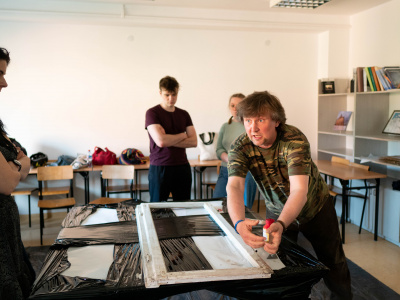
- 'Because of the chemicals present, we ventilate the room, but often in conservation work, there is no such luxury,' - said Waldemar Tomaszewski. - 'In the case of operations in the basement, we spend 6 or 8 hours without access to fresh air. In such cases, special masks are available, and failure to take appropriate safety measures risks, for example, neck cancer.'
Some participants came to the tutors with their own issues, asking how to renovate old objects or furniture and where to get suitable materials for such work.

Gerda Hoppe and Karol Kuter
- 'I found the topic itself interesting. There is something old, and you can give it new life. You scrape off the damaged layers and renovate the whole object,' - said Gerda Hoppe, a participant in the workshop. - 'If I were to buy an antique in the future, I would want to renovate it this way'
- 'I enjoyed it, although I didn't come with the idea of my own restoration or conservation in mind, but rather to see what the process looks like,' - said workshop participant Karol Kuter. - 'The most interesting thing I found was the heat gun used to peel paint. At the workshop, we learnt the basics of the job, and it was quite easy, whereas the restorer's work is certainly much more difficult.'
Dr Ewa Jachnicka and mgr Dariusz Chmielewski talked about professionally restoring the façade of the Pelplin Abbots' House. The conservators managed to find photographs of the building dating back to the mid-19th century, allowing them to trace the changes to the façade over almost two hundred years.
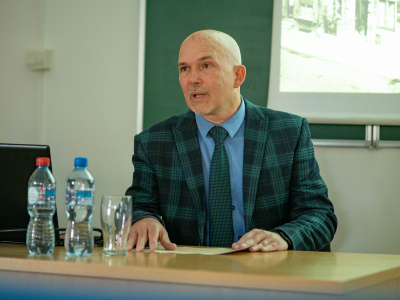
Dariusz Chmielewski
- 'In 1912, a year after taking over the building, the City of Gdańsk decided to carry out the most extensive and last renovation of the Pelplin Abbots' House. This is indicated on the front façade by an inscription with the date of the work,' - recounted Dariusz Chmielewski. - 'At that time, the city extended the annexe, raised it quite considerably and adapted the attic to house the city building office.'
The lecturers talked about, among other things, the growth and shortening of the vine on the side and front elevations of the building or the bricking up of many windows and the exit from the Radunia side. It also had its discoveries. On the side elevation of the building, the conservators discovered, among other things, a 17th-century cornice, which was probably part of the original construction from 1612, and gilding on some elements of the portal.
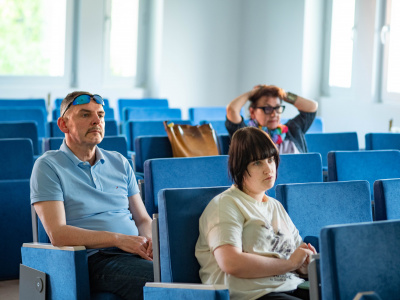
- 'We noticed a beautiful cornice that was being damaged by the overgrowth of vine roots. Unfortunately, such vines reach a diameter of 10 centimetres, meaning our discovery was all cracked,' - dr Ewa Jachnicka recounted. - 'When this ivy began to grow, it was very keen for it to cover the entire façade, which is why hooks can be found on the sidewall to serve as support points for the plant.'
Dr hab. Marcin Kaleciński, prof. UG talked about the history of the Pelplin Abbots' House, which is now part of the UG History Faculty. Among other things, the building served as an inn and as the seat of the office and design office of the City of Gdańsk.
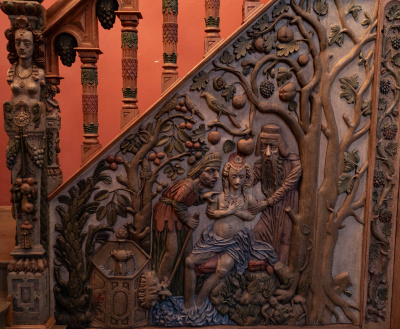
Balustrade in the hallway of the Pelplin Abbots' House
The art historian also talked about the parable depicted on the balustrade of the wooden staircase in the hallway of the building. The story of Susanna and the Old Men describes the fate of a young girl attacked by two judges. Only through divine intervention did the woman escape punishment for the crimes they unjustly accused her of.
At the end of the event, the lecture participants could see the interior of the Pelplin Abbots' House with their own eyes - from the vestibule to the room where graduation theses of art history students and doctoral candidates are currently being defended.

